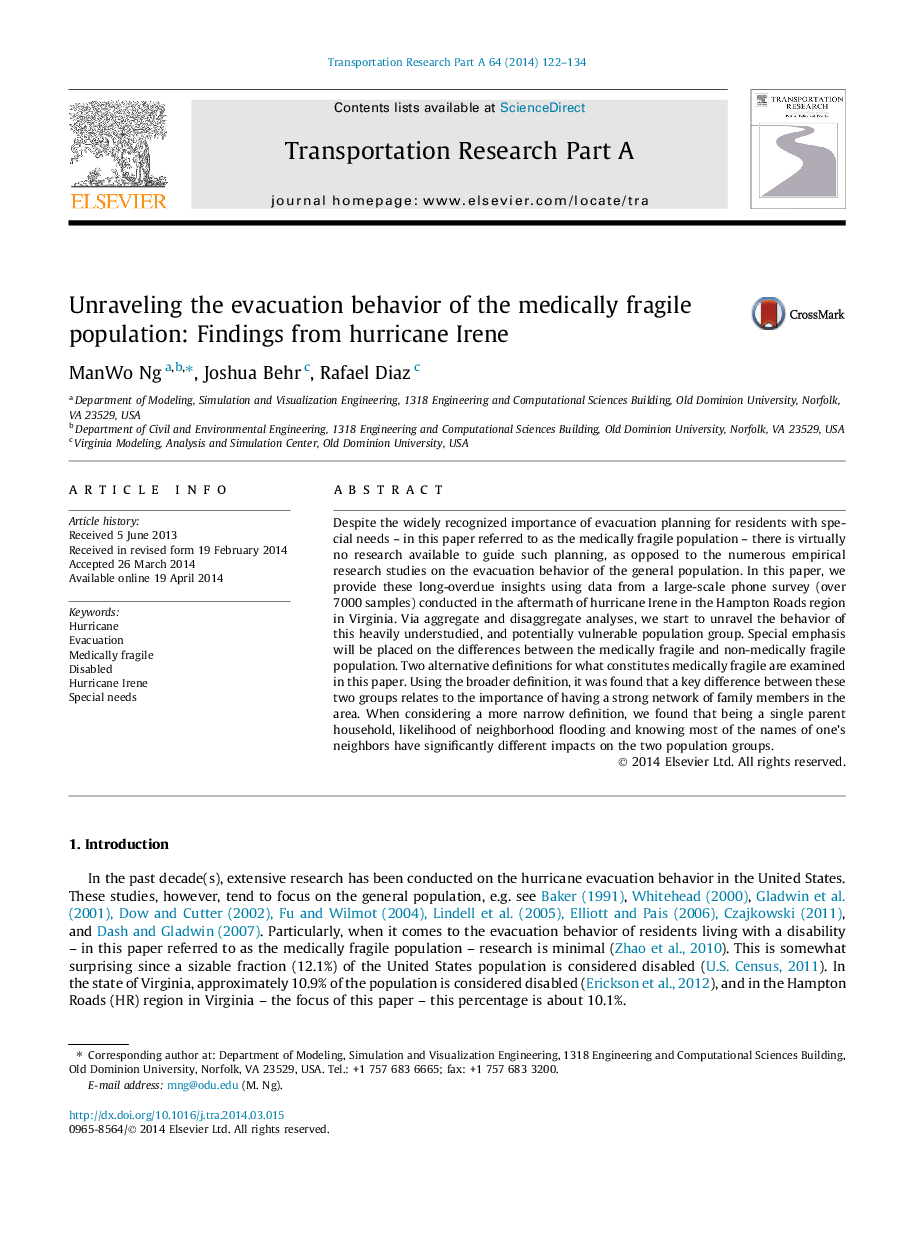| Article ID | Journal | Published Year | Pages | File Type |
|---|---|---|---|---|
| 6781786 | Transportation Research Part A: Policy and Practice | 2014 | 13 Pages |
Abstract
Despite the widely recognized importance of evacuation planning for residents with special needs - in this paper referred to as the medically fragile population - there is virtually no research available to guide such planning, as opposed to the numerous empirical research studies on the evacuation behavior of the general population. In this paper, we provide these long-overdue insights using data from a large-scale phone survey (over 7000 samples) conducted in the aftermath of hurricane Irene in the Hampton Roads region in Virginia. Via aggregate and disaggregate analyses, we start to unravel the behavior of this heavily understudied, and potentially vulnerable population group. Special emphasis will be placed on the differences between the medically fragile and non-medically fragile population. Two alternative definitions for what constitutes medically fragile are examined in this paper. Using the broader definition, it was found that a key difference between these two groups relates to the importance of having a strong network of family members in the area. When considering a more narrow definition, we found that being a single parent household, likelihood of neighborhood flooding and knowing most of the names of one's neighbors have significantly different impacts on the two population groups.
Related Topics
Physical Sciences and Engineering
Engineering
Civil and Structural Engineering
Authors
ManWo Ng, Joshua Behr, Rafael Diaz,
